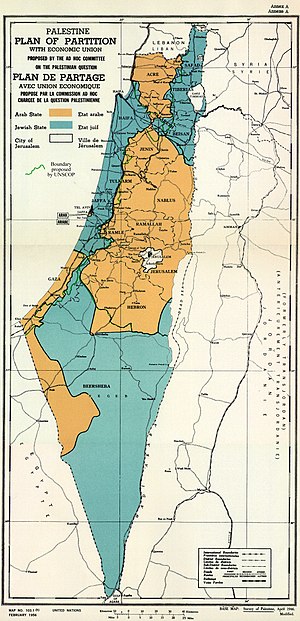
The demographics of Israel, monitored by the Israel Central Bureau of Statistics, encompass various attributes that define the nation's populace. Since its establishment in 1948, Israel has witnessed significant changes in its demographics. Formed as a homeland for the Jewish people, Israel has attracted Jewish immigrants from Europe, Asia, Africa, and the Americas.

Israelis are the citizens and nationals of the State of Israel. The country's populace is composed primarily of Jews and Arabs, who respectively account for 75 percent and 20 percent of the national figure, followed by other ethnic and religious minorities, who account for 5 percent.

The Arab citizens of Israel form Israel’s largest ethnic minority. They are mostly former Palestinian citizens who have continued to live in what became Israel, and their descendants. The majority of Arabs in Israel now prefer to be identified as Palestinian citizens of Israel.

There are six main administrative districts of Israel, known in Hebrew as mekhozot and in Arabic as mintaqah. There are also 15 subdistricts of Israel, known in Hebrew nafot and in Arabic as qadaa. Each subdistrict is further divided into natural regions, which in turn are further divided into council-level divisions: whether they might be cities, municipalities, or regional councils.

Majdal Shams is a predominantly Druze town in the Israeli-occupied Golan Heights, located in the southern foothills of Mount Hermon. It is known as the informal "capital" of the region.
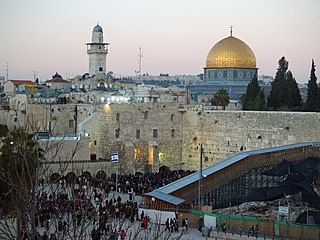
Tourism in Israel is a major economic sector and a significant source of national income. Israel offers a plethora of historical and religious sites, beach resorts, natural sites, archaeological tourism, heritage tourism, adventure tourism, and ecotourism. For practical reasons, this article also covers tourism in the West Bank and the Golan Heights, since it is closely interconnected with the mass tourism in Israel. In 2019, Israel saw a record 4.55 million tourist arrivals, with tourism contributing NIS 20 billion to the national economy in 2017.

The Quds Governorate, also Jerusalem Governorate, is one of the 16 governorates of Palestine and located in the central part of the West Bank. The current governor, appointed by the Palestinian National Authority, is Adnan Ghaith since 2018, who succeeded Adnan al-Husayni, appointed in 2008. The Governorate has two sub-districts: Jerusalem J1, which includes the localities within the territory controlled by the Israeli Jerusalem municipality, and Jerusalem J2, which includes the remaining parts of the Jerusalem Governorate. The district capital of the Governorate is East Jerusalem (al-Quds).

Kafr Yasif is an Arab town in the Northern District of Israel. It is located 11 kilometers (6.8 mi) northeast of the city of Acre and adjacent to Abu Sinan and Yarka. The population of Kafr Yasif is half Christian (52.1%) with the rest Muslim (44.9%), and a small Druze community.

The Negev Bedouin are traditionally pastoral nomadic Arab tribes (Bedouin), who until the later part of the 19th century would wander between Hijaz in the east and the Sinai Peninsula in the west. Today most live in the Negev region of Israel, while a minority who were expelled during the 1948 war live in Palestine. The Bedouin tribes adhere to Islam and most are Israeli citizens. Some Bedouins voluntarily serve in the IDF.

Umm Batin is a Bedouin village in southern Israel. Located in the northern Negev desert, 12 km northeast of Beersheba and adjacent to the highway 60, it falls under the jurisdiction of al-Kasom Regional Council. In 2022 it had a population of 4,981.

Unrecognized Bedouin villages in Israel are rural Bedouin communities in the Negev and the Galilee which the Israeli government does not recognize as legal. They are often referred to as "unrecognized villages".
Population shifts in Israel after 1948 refers to the movement of Jewish and Arab populations in the wake of Israeli independence and the outbreak of the 1948 War. Arab villagers who resettled in other locations in Israel after 1948 are often referred to as internally displaced Palestinians. Many fled during the war but later returned to their homes. The Palestinians say that Israelis drove them from out while Israel says most left of their own accord. From 1948 to 1951, mass immigration nearly doubled Israel's Jewish population.
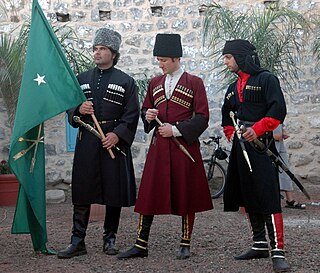
Circassians in Israel are Israelis who are ethnic Circassians. They are a branch of the Circassian diaspora, which was formed as a consequence of the 19th-century Circassian genocide that was carried out by the Russian Empire during the Russo-Circassian War; Circassians are a Northwest Caucasian ethnic group and a nation; who natively speak the Circassian languages and originate from the historical country-region of Circassia in the North Caucasus. Most Circassians in Israel are Muslims.
The Jewish-Arab Center (JAC) is a multidisciplinary research institute in the University of Haifa in Haifa, Israel, active since 1972. The head of the center since 2014 is Prof. Rassem Khamaisi.
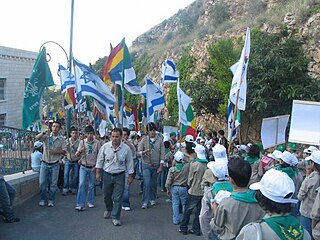
Israeli Druze or Druze Israelis are an ethnoreligious minority among the Arab citizens of Israel. They maintain Arabic language and culture as integral parts of their identity, and Arabic is their primary language. In 2019, there were 143,000 Druze people living within Israel and the Israeli-occupied Golan Heights, comprising 1.6% of the total population of Israel. the majority of Israeli Druze are concentrated in northern Israel, especially in Galilee, Carmel and the Golan areas.
Joseph Ginat was an Israeli anthropologist, author, political advisor, and soldier.
The Abu Alkian is a tribe living in the Negev desert in southern Israel.
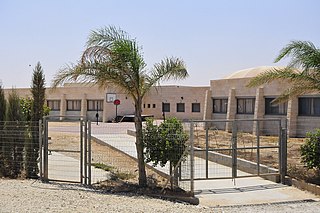
al-Kasom Regional Council is one of two Negev Bedouin regional councils formed as a result of the split of the Abu Basma Regional Council on November 5, 2012. Al-Kasom regional council is in the northwestern Negev desert of Israel.

In Israel, the mixed cities or mixed towns are the eight cities with a significant number of both Israeli Jews and Israeli Arabs. The eight mixed Jewish-Arab cities, defined by the Israel Central Bureau of Statistics as those with more than 10% of the population registered as "Arabs" and more than 10% of the population registered as "Jews", include the following seven Israeli cities: Haifa, Lod, Ramle, Jaffa, Acre, Nof HaGalil, and Ma'alot Tarshiha. Approximately 10% of the Arab citizens of Israel live in these seven cities. The eighth city is Jerusalem, in which the Arab part of the city, East Jerusalem, has been annexed by Israel but is not recognized as such under international law.

